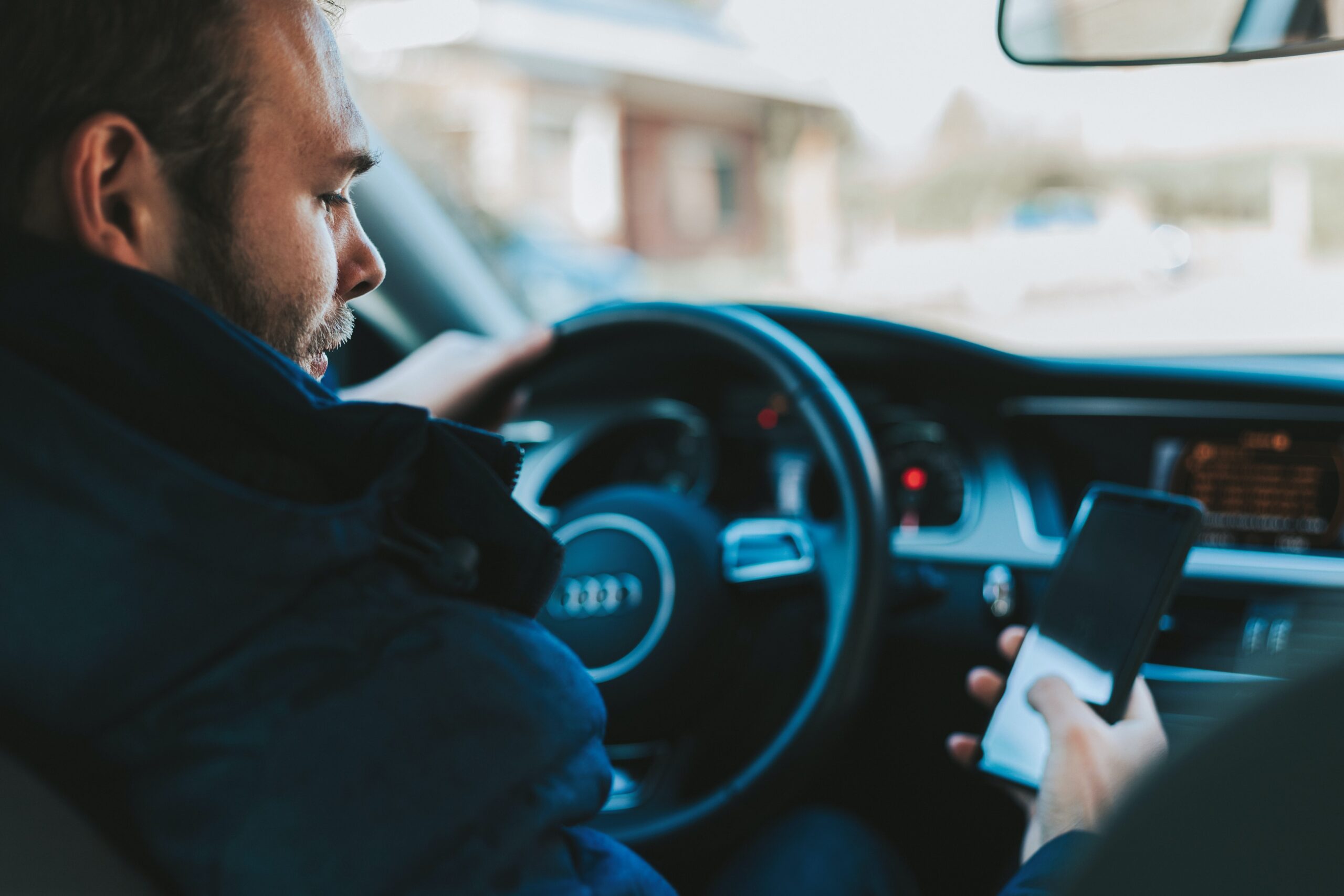Distracted driving is credited with causing thousands of accidents every year. As many as 1,000 people are injured in a distracted driving accident every day.
There are plenty of things that can go wrong while driving. You can blow a tire or slip on ice, both of which might be out of your control. Driving distracted is not an accident though, it’s a choice. You can help make the roads safer by keeping your full attention on the road.
Examples of Distracted Driving:
- Talking on the phone, even if it’s hands-free
- Texting
- Browsing social media or the internet
- Eating or drinking
- Putting on makeup
- Looking at a map or setting your navigation app
- Changing the radio station
- Smoking or vaping
- Reaching for something
According to DriveSafe Online, there are 3 types of distracted driving:
- Visual distractions take your eyes off the road
- Manual distractions take your hands off the wheel
- Cognitive distractions take your mind off driving
There are many different forms of distracted driving, but texting is widely accepted as the most dangerous since it involves all 3 types of distracted driving.
In Colorado, texting while driving is prohibited. For drivers under the age of 18, no cell phone use is allowed, even if it’s hands-free. Teens have a higher risk of being in an accident caused by texting and driving due to the combination of their lack of driving experience and the desire to constantly be connected to their phones.
In 2019, 39% of high school students reported texting or emailing while driving during the past month.
-Children’s Hospital of Philadelphia
It’s important for parents to teach their teens the importance of focusing their attention solely on driving and not on talking, texting, or posting on social media. The first step is modeling that behavior. If your kids see you on your phone while driving, they will assume it’s okay to do and are more likely to engage in distracted driving themselves.
Frightening Statistics:
- 3142 people were killed in distracted driving accidents in 2019
- An estimated 36% of drivers use a smartphone app at a red light or stop sign, and 35% continue to use their phone while driving
- Texting while driving doubles the chances for a car accident and triples the odds of your vehicle leaving the road, going over a curb, crashing into a tree, or colliding with a sign
- Using a cell phone while behind the wheel reduces the amount of brain activity associated with driving by 37%
- High school students who admit to texting while driving are also less likely to wear a seat belt and more likely to drink and drive
- If you text while driving 55 mph, it’s the equivalent of driving the entire length of a football field without looking up
- A person who texts while driving is 6 times more likely to be in an accident than someone who is driving drunk
Children’s Hospital of Philadelphia suggests the following strategies to break the habit of teen cell phone use while driving:
- “Do not disturb while driving” settings can remove the temptation to use a cell phone while driving because notifications and messages are silenced while behind the wheel and can be set up to automatically come on. To increase adoption, this could be the factory default setting.
- Applications that track driving behavior are being used by auto insurance companies to offer personalized rates for safe driving behaviors. A recent survey of 16- and 17-year-olds led by Dr. Delgado found those who admit to texting while driving may be convinced to refrain from this risky behavior if there was a financial incentive.
- Applications that passively track cell phone use while driving give parents the opportunity to monitor their teens’ behaviors behind the wheel and to enforce house rules that prohibit cell phone use while driving for any reason and at any time.
- Parents need to model safe driving behaviors, including no cell phone use while driving, well before their teens reach driving age.
- Parents need to refrain from contacting their teens when behind the wheel. A CIRP/Penn School of Nursing study found that teen drivers receive the most calls from their parents.
- Parents can provide their teens with safe alternatives to talking or texting while driving:
- complete any call or text before starting the car
- check in only after arrival
- pull over to text or make a call
Understanding the risks of distracted driving is just the beginning. The best way to keep yourself and others on the road safe is to pledge not to drive with distractions.
You can put your phone on Do Not Disturb before you leave, know where you’re going before you start the car, and avoid eating and drinking during the trip. It’s also important to be aware of the distracted drivers around you so you’re ready to react if they make a sudden move that puts you in danger.
Help your loved ones stay safe by talking to them about the dangers of driving distracted.
Sources:
Staff, D. S. O. (2020, October 2). 12 Important Texting and Driving Statistics. DriveSafe Online®. https://www.drivesafeonline.org/defensive-driving/12-important-texting-and-driving-statistics/.
National Center for Statistics and Analysis. (2020, December). Overview of motor vehicle crashes in 2019. (Traffic Safety Facts
Research Note. Report No. DOT HS 813 060). National Highway Traffic Safety Administration.
Opportunities to Reduce Youth Distracted Driving. Center for Injury Research and Prevention. (2021, April 1). https://injury.research.chop.edu/blog/posts/opportunities-reduce-youth-distracted-driving-0.
Cell Phones. Teen Driver Source. (n.d.). https://www.teendriversource.org/teen-crash-risks-prevention/distracted-driving/cell-phones.
























